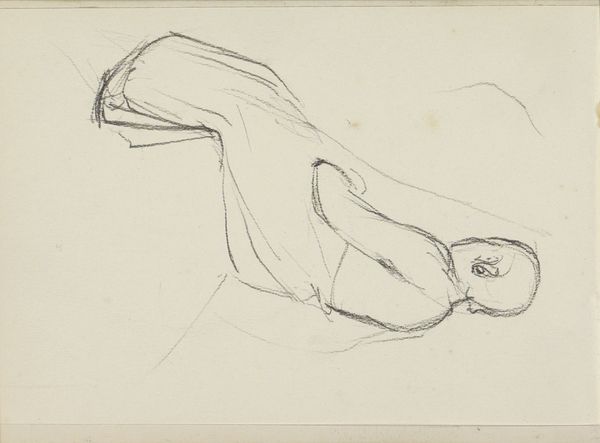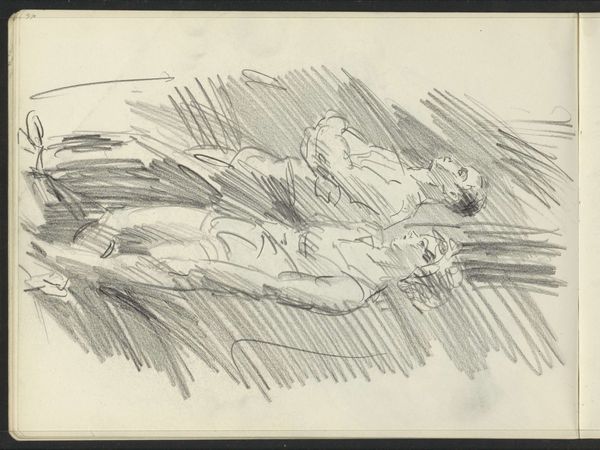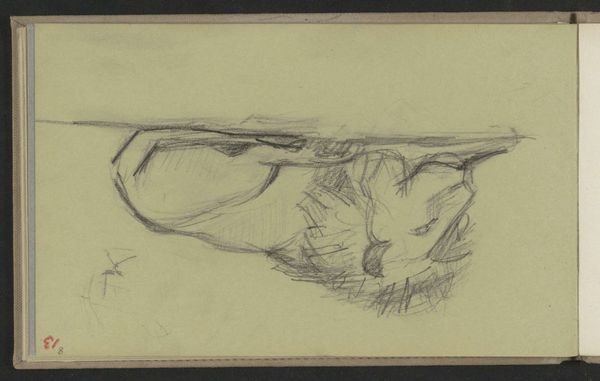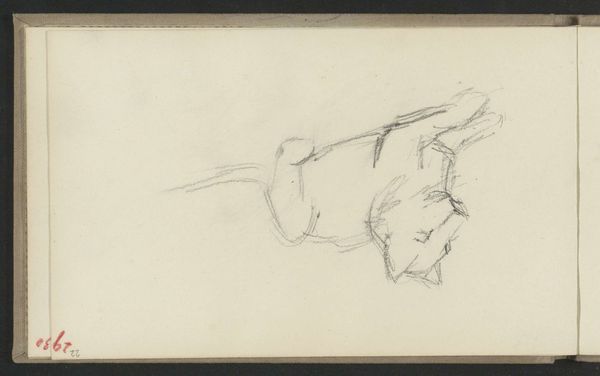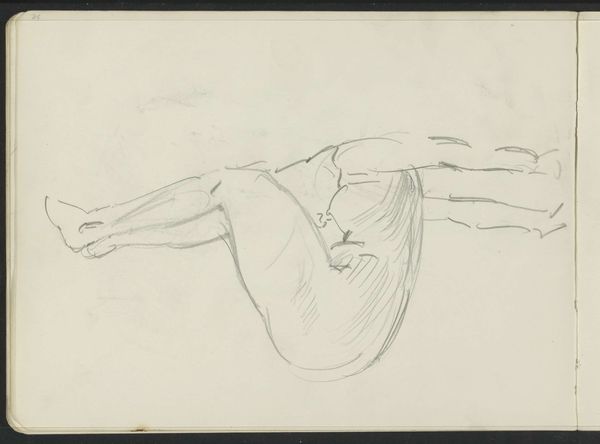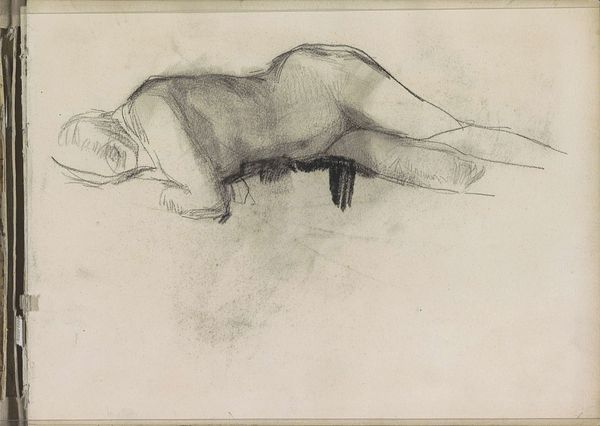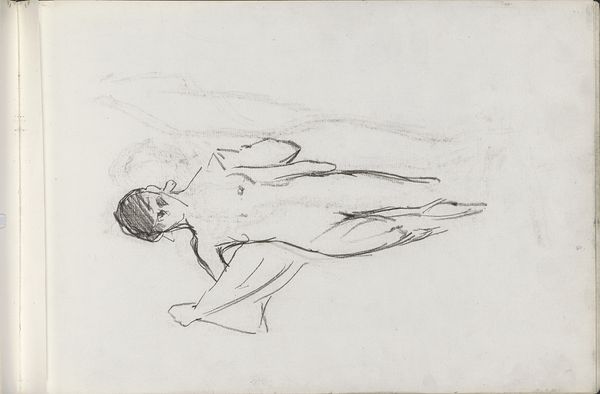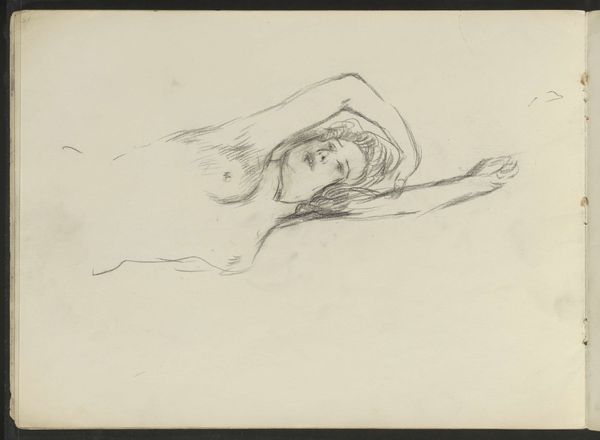
Copyright: Rijks Museum: Open Domain
Isaac Israels made this sketch of a female nude with graphite, likely in the late 19th or early 20th century. In that era, the art academy was the dominant institution shaping artistic production. Male artists routinely studied the nude female form, while female artists were often excluded from such studies, or permitted only to draw from clothed male models. How might such institutional practices have influenced the way the nude body was represented? What are the politics of imagery when it comes to gender? Does this sketch challenge or reinforce social norms about female representation? The loose lines and informal composition of the drawing suggest a casual and intimate scene, reflecting the rise of impressionism in Europe during that time. It's worth investigating the artist's personal history: were his progressive views about the social role of art? Such questions about gender and representation are essential for historians in understanding the cultural meaning of art. Primary sources such as letters, diaries, and institutional records, can also reveal the social and political contexts in which art was made.
Comments
No comments
Be the first to comment and join the conversation on the ultimate creative platform.



